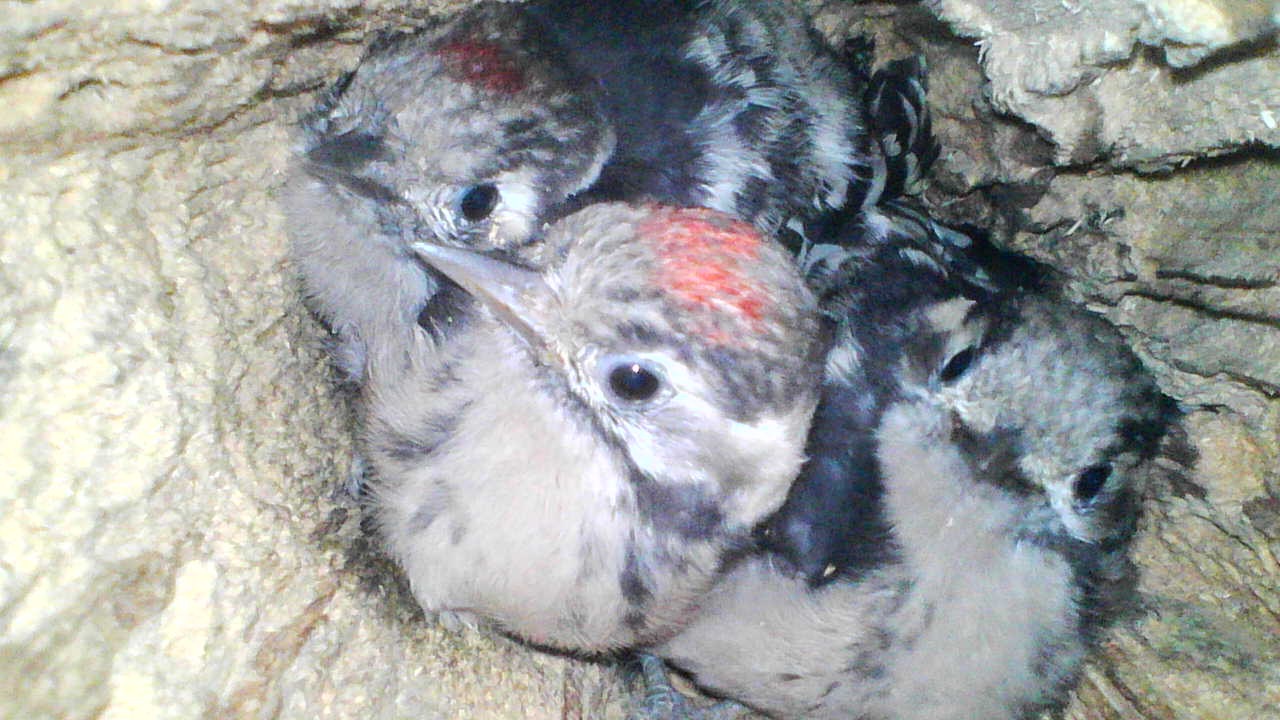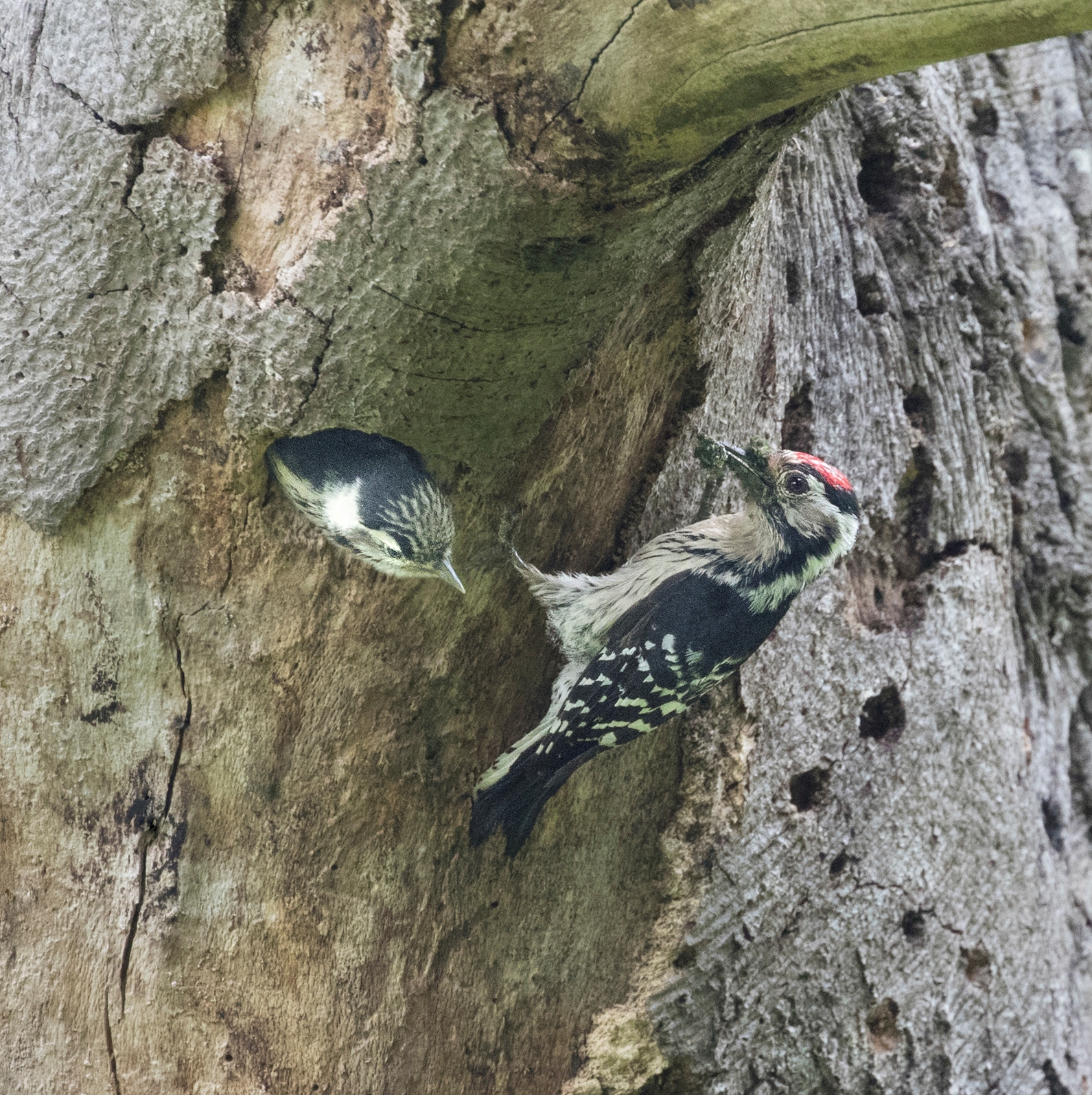 Ken and Linda Smith are both retired and now live in Chichester, West Sussex having moved from Hertfordshire last year. Before their retirements, Linda was a senior civil servant with Defra and Ken a research scientist with the RSPB. Ken has always been heavily involved with local birding and recording through the Herts Bird Club, bird ringing and the BTO.
Ken and Linda Smith are both retired and now live in Chichester, West Sussex having moved from Hertfordshire last year. Before their retirements, Linda was a senior civil servant with Defra and Ken a research scientist with the RSPB. Ken has always been heavily involved with local birding and recording through the Herts Bird Club, bird ringing and the BTO.
Having studied woodpeckers, largely in their own time, for more than 30 years Ken and Linda realised that, with a little help and encouragement, birdwatchers could make a big contribution to understanding the causes of the decline of the Lesser Spotted Woodpecker and monitoring the remaining populations – so in 2015 they launched the Lesser Spotted Woodpecker initiative.
Website www.woodpecker-network.org.uk
Twitter @lesserspotnet

Lesser Spotted Woodpecker network
The Lesser Spotted Woodpecker is a rapidly declining species which was added to red list of Birds of Conservation Concern in 2009. Research by the RSPB between 2005 and 2009 found that low breeding success was an issue but the reasons for this were not entirely clear nor were there many suggestions of what could be done the improve the situation.
Lesser spots are extremely challenging birds to study. For much of the year they are virtually invisible only becoming detectable in early spring when they drum and display. Normally only a few nests are reported to the BTO Nest Record Scheme each year and, because of the difficulties of inspecting lesser spot nests high in fragile dead trees, only limited data on breeding success data are collected. The dedicated RSPB studies resulted in about a dozen nests being recorded each year but after the studies were stopped (understandable given the high cost and the many competing priorities) numbers fell back again.
Given that low breeding success was the key hypothesis for the decline of the species Linda and I started an initiative to encourage nest recording of lesser spots in 2015. Using our experience and nest inspection equipment developed over 30+ years of studying woodpeckers we offered to help observers record their lesser spot nests. In the three years since we started the project we have recorded 28 nests with good data on the breeding success for the majority. We have purchased additional nest inspection camera systems so we are now able to lend them out to observers to allow them to collect their own data. In 2017, we launched a website (www.woodpecker-network.org.uk) which has increased the profile of the project and allowed wide feedback of the results.
On the way, we have learned a great deal about lesser spots and how to go about studying them and a few people have become hooked by the challenge of studying them. Many of these tips can be found on our website together with yearly reports.
We have found the breeding success to be variable from year to year – 2015 and 2017 were good whilst 2016 was very poor. Lesser spots do tend to occur in well wooded landscapes but they don’t necessarily nest in large woodland blocks. Many of the nests have been found near to edges or in small woods not frequently visited by bird watchers.
We have already started to experiment with ideas like providing supplementary food to improve breeding success. Although lesser spots do not regularly visit garden feeders (in contrast to the larger great spot), at two of the regular lesser spot nesting sites the adults have been seen collecting food from fat feeders. If we can find a way of getting lesser spots to take supplementary food we may be able to improve breeding success but will also learn a great deal about the ecological drivers.
Lesser spots are now well into their quiet phase. They are still around but more or less invisible until February and March next year. Why not take up the challenge of following your local lesser spots through to nesting? We will be happy to help all we can.
Ken & Linda Smith

Thank you Ken and Linda for your important work.
Yes, that unexpected and scrappy woodland edge-type habitat rings true. This 70 acre heath/wood patch at Midhurst used to have a breeding pair until about ten years ago.
As a lazy birdwatcher, I’m not at all good with this elusive bird, but the game changer for me was being told that the Lesser Spot has the same call as the Kestrel’s high pitched ‘kee-kee-kee’ note.
Gilbert White, three parishes away, appears not to have been aware of this species – John Eyre in ‘Gilbert Whites’s Birds: Then and Now’ (Selborne Papers No.3; 2009) does not list it. Of the woodpecker family, it only gives Wryneck and Green Woodpecker – very odd.
But White loved his soundscape and its seasonality. How come he omitted to celebrate and record the early spring drumming of either of these species if they had been around? (He carefully lists the Wryneck’s ‘harsh note’ in the ‘middle of March’ and the Green Woodpecker’s ‘loud and hearty laugh’.) For added intrigue, there is this in his Letter XVI, April 18th 1768:
‘My countrymen talk much of a bird that makes a clatter with its bill against a dead bough … calling it a jarbird. I procured one to be shot in the very fact, it proved to be Sitta europoea (the nuthatch). Mr. Ray says that the less spotted wood-pecker does the same. The noise may be heard a furlong or more.’ (The Natural History of Selborne) – even odder.
There again, have all his papers been gone through thoroughly enough?
Mark, ref. your latest blog, apologies for my tendency for not getting all my thoughts together in one go. But it’s worth adding the following from the same letter above:
‘ … [snipes] always hum as they are descending … Some suspect it is made by their wings.’
White is willing to ponder the drumming of snipe elsewhere in his writings but where are his thoughts on the louder and more emphatic woodpecker drumming song?
Hi Murray
Interesting – looking at old avifaunas (around the end of the 1800s) woodpeckers were scarce and persecuted. Lessers were thought to be more common than greats at that time. I think woodlands were so heavily managed and used for fuel etc that woodpecker numbers were low. For instance absence of great spots in much northern England and Scotland when woods were denuded for charcoal and bark.
Thanks for the comments.
Ken Smith
Hi Ken,
I share your thoughts re woodland and the availability of dead and rotten trees in the past. It’s quite clear that pre the mid 19th C that there was a huge demand for firewood before people had the general use of coal. Peat was a vital resource but even by Whites’ time (and by his own evidence) most of the local moors had been mined out, resulting in further pressure to cut and take any dead wood. In fact, on occasions there must have been desperate shortages because people were even forced to burn dried dung which was gathered up from the heaths and commons.
Thanks for that information.
A number of years ago we had Lesser Spotted come to the peanut feeder for a few years. Following the same pattern as the Greater Spotted: in the depths of winter in hard spells and again the adults came in the breeding season and then brought their young along for a spot of self feeding, so they knew where the feeder was and returned on their own but sadly they no longer occur here.
Due to the frequency and direction of arrival we thought there was only one pair compared to the more numerous visits of the GSs.
The GS fly in from some distance away, I have watched them fly from woods across a shallow valley to our feeder.
Hi Andrew
I guess your lesser spots were probably nesting within 500m of your garden – a pity they are no longer around. We’ve had colour ringed great spots regularly flying 1km from nest site to garden feeder overflying many other great spot territories on route. Great spots also now regularly seen in hedgerow trees and farmland.
best wishes
Ken Smith
Had a great spell in 1990 in staffs where I found 5 pairs of Lesser, 8 pairs of Great spot and 5 pairs of Green all in the Churnet Valley. Dutch Elm was at its worst [best of peckers] and the interesting thing about all 5 nests of lesser was they were all in fast grown species meaning the year’s growth bands were far apart.
I know it was only one breeding season but adding fast growing popular or aspen may give the birds a better chance of making holes in the future. The old holes were used by both Redstart and Pied Flycatcher so a decline in lesser would also effect the nest potential of other hole nesting species.
Hi John
It must have been great finding all those lesser spot nests – they did very well during the height of Dutch elm disease. Does anyone know whether they ae still around in the Churnet Valley? – as I recall the habitat looks okay for them there.
Good point about fast growing nest trees – if you look at our annual reports you will see that nests are often in dead birch, poplar, alder etc.
Best wishes
Ken S
Brilliant stuff Ken and Linda. Sort of relevant, but there’s some speculation that the white backed woodpecker might have been native to Scotland – mixed/boreal forests you didn’t get elsewhere in the UK up here, but deforestation was so bad according to some all woodpecker species were lost in Scotland for a while. Green and GSW could move back from down south but if there were white backed woodpeckers or indeed any other lost boreal species they’d had it. Sad and frustrating to reflect on that – the rules do not allow ‘re’introduction of speculative former natives. At least the GSW has made it back to Ireland.
Most of the information I’ve seen says that White-backed Woodpecker requires old growth deciduous forest, rather than boreal or specifically mixed. E.g. the paragraph below from the IUCN red list page (http://www.iucnredlist.org/details/22727124/0). I think its current distribution is mainly a consequence of deforestation & forest management elsewhere which has removed or degraded its habitat. So if it was native to the UK I don’t see why it wouldn’t have occurred throughout the country, rather than just Scotland. Chances are populations would actually have been higher in lowland areas with higher primary productivity.
IUCN:
The species occurs in broad-leaved forest. It uses old-growth and overmature but relatively open deciduous and mixed forest with a high proportion of dead trees and fallen timber (Winkler and Christie 2002). In central and southern Europe it is found in forests dominated by beech (Fagus spp.), hornbeam (Carpinus betulus) and oak (Quercus spp.) and in northern and eastern Europe forests dominated by birch (Betula spp.) and aspen (Populus tremula) (Hagemeijer and Blair 1997).
Giles – welcome and thank you!
Thanks for that. I used the WBW as an example because someone wrote a research paper (which I haven’t seen) about the possibility of WBW being native to Scotland, had assumed (i.e was lazy) that was because of mixed forests in Scotland, but it may have been for other reasons i.e last naturalish forests in UK being here. Grey headed woodpecker might have been a better example of a boreal/mixed forest resident that died out in Scotland – possibly.
A pair was seen and heard at Ditchford Lakes (Northamptonshire) last year during a breeding bird survey. It is not known if breeding occured. I last saw this bird around 2007 at the same location.
I have also seen breeding birds (adult collecting food) at Honey Hill Wood at Tilbrook which is on the Northants/Bedfordshire border. This was around 2008.
Chris – thanks! They aren’t far from me then! I usually search for them in Old Sulehay – and usually fail to find them!
Hi Chris
It sounds as though the birds are still likely to be breeding at Ditchford Lakes – definitely worth a good search of potential nesting habitat in March/April next year.
The Honey Hill record is a few years ago now but you never know they could still be there.
Ken
Mark, no just down the road. Close by are Spanoak and Swineshead Woods, managed by Woodland Trust I believe. All of them well worth a visit.
Such a dreadful shame about the decline of the LSW. When I was a boy growing up in Bucks, we had them every week (it seemed) on our large, old apple trees in our garden! Fast forward 30 odd years and I’ve not seen one in decades.
Doug – what a shame. I remember them being much commoner in my Somerset youth. I hardly ever see them these days.
Hi Doug
Orchards are still used in places like Herefordshire and Worcestershire but sadly in most counties they are no longer part of the landscape.
Ken